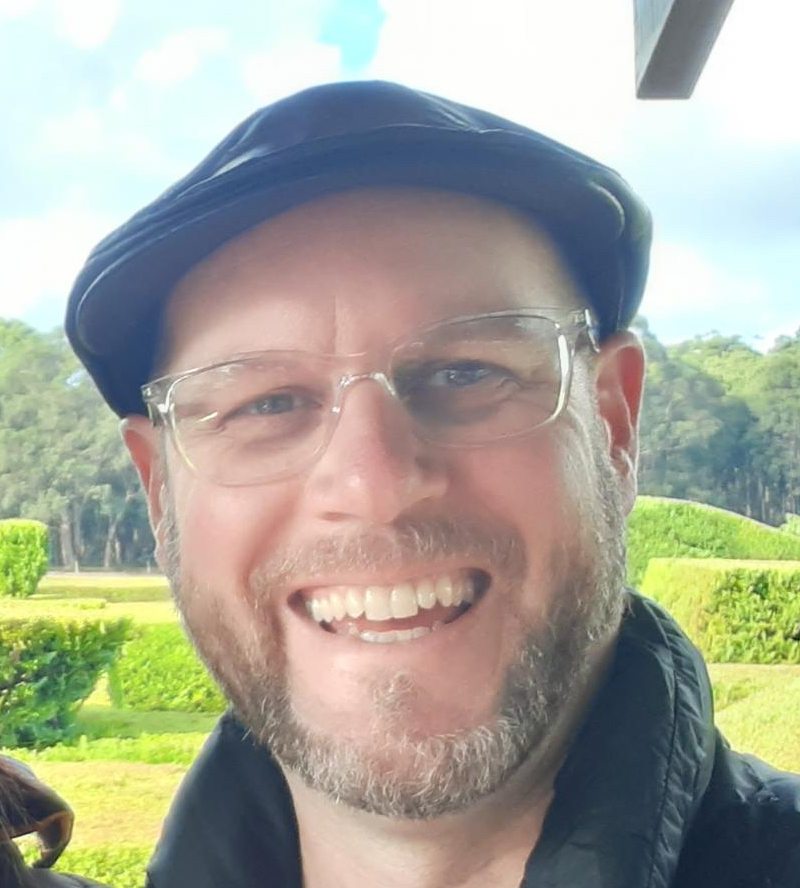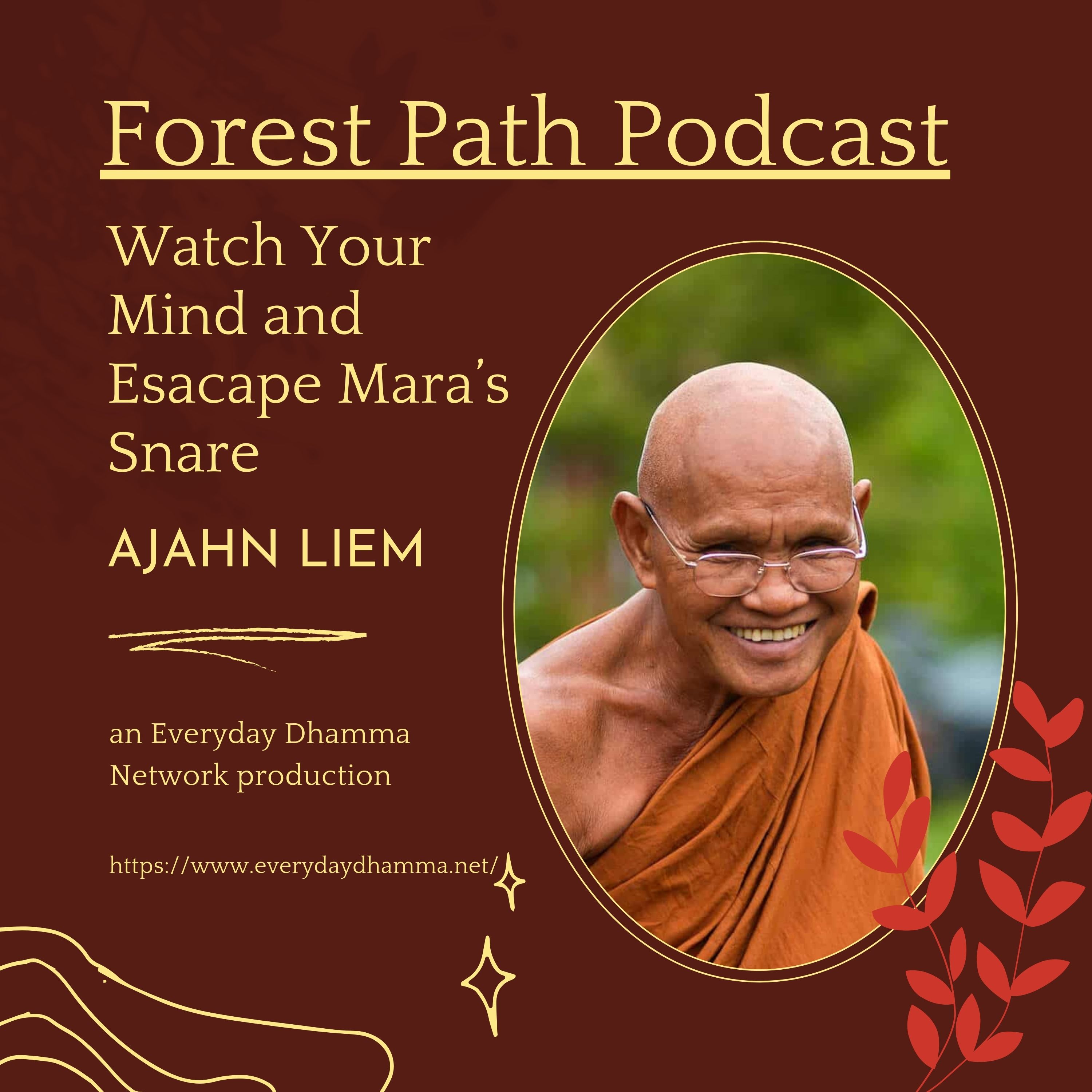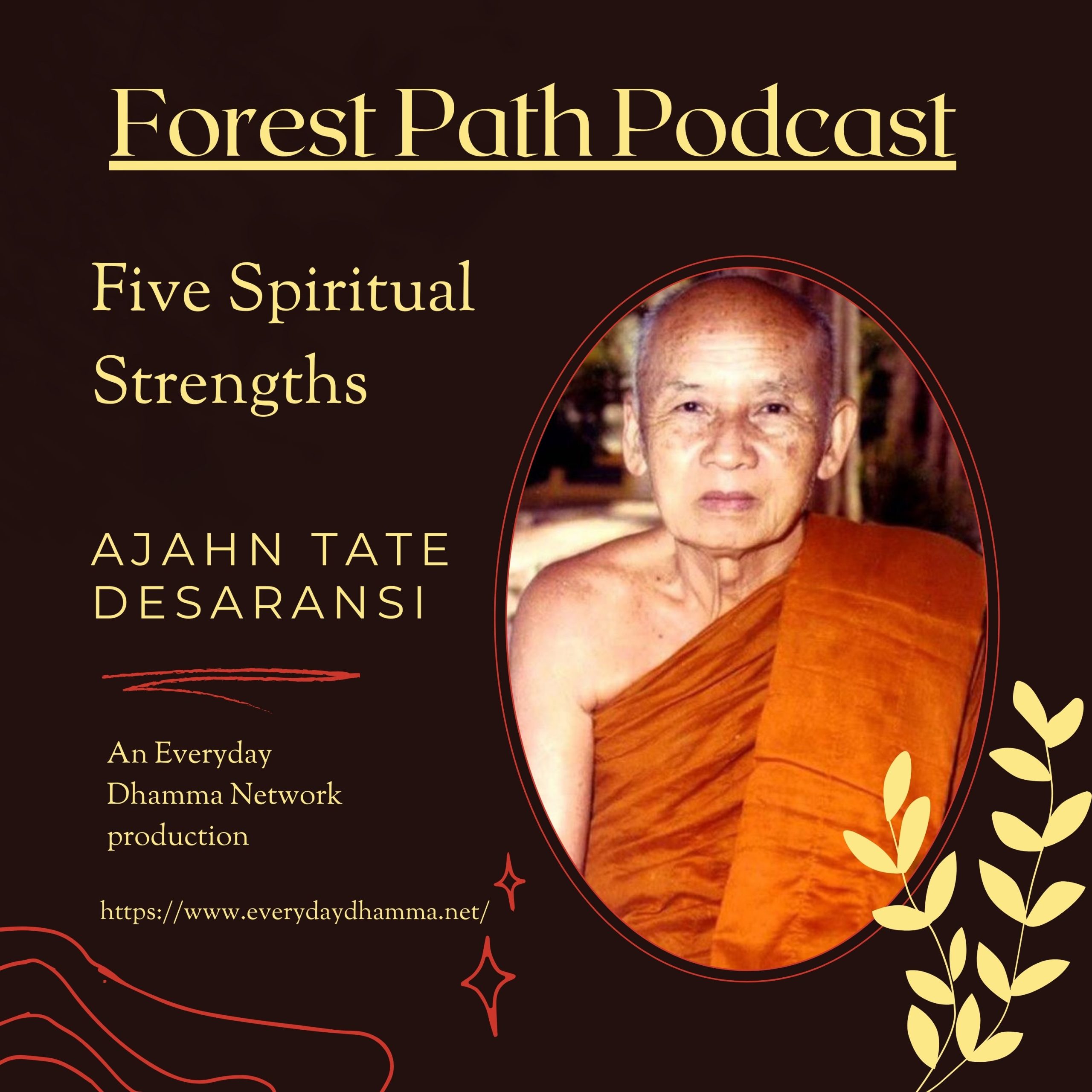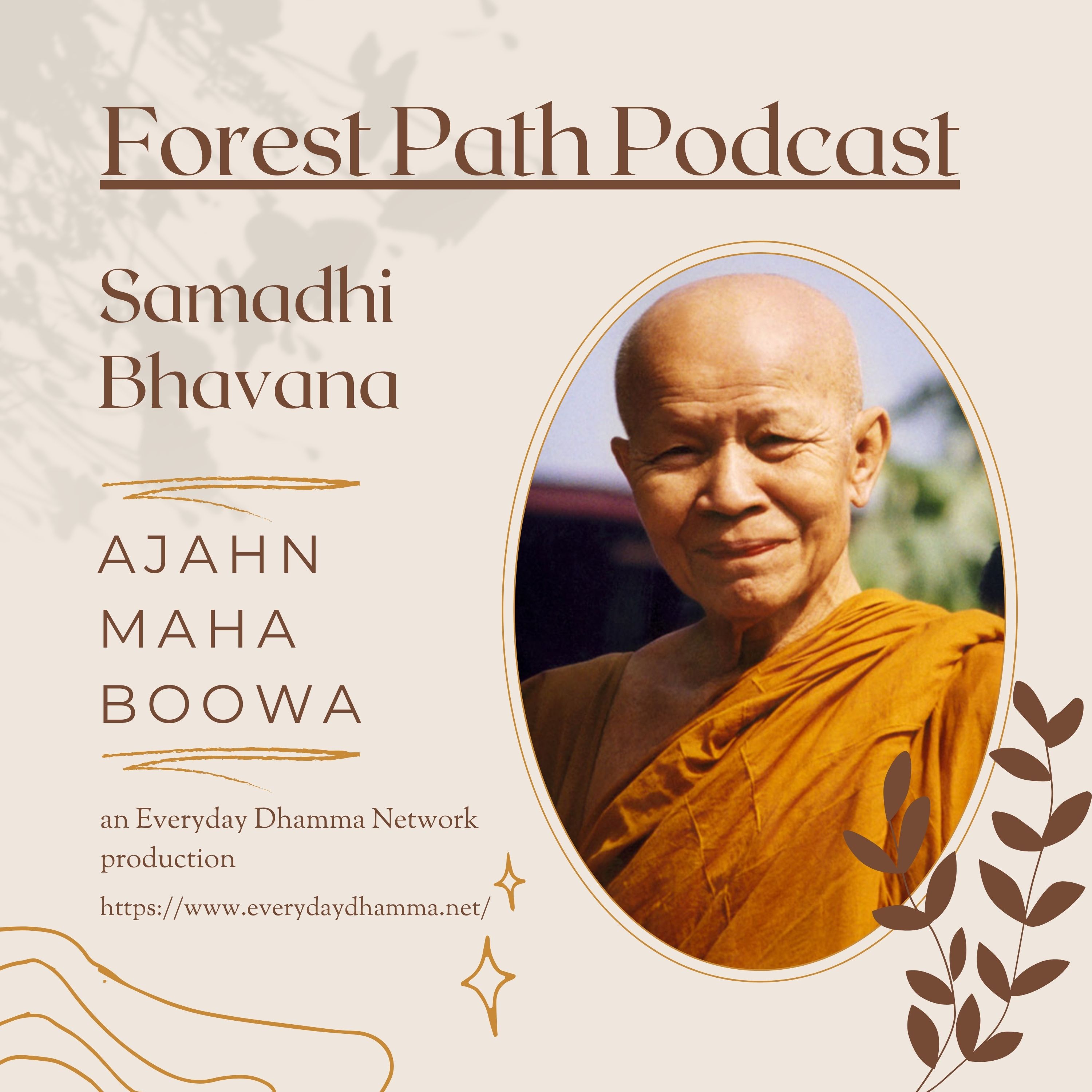Episode Transcript
Adaptation
In the practice of Dhamma things progress bit by bit. It is not possible to force or hurry things in any way, similar to how we build this monastery3. If one wants to build a monastery, one needs to proceed gradually, bit by bit. One allows for adaptations and new developments to take place during the course of the work. This also should be the attitude towards Dhamma practice. To accomplish everything in a single day is probably impossible, so we need to go step by step.
I didn’t expect it to be too different here, as Australia and Thailand are quite similar: that people sometimes start feeling either happy or unhappy should be the same everywhere.
Of course, how one feels under certain living conditions also depends on the climate, but actually the weather only becomes something that we find difficult when our bodily resistance is weak. If we have built up some resistance, there is nothing too hard about a different climate. To think that it’s too hot or too cold isn’t the point – it’s only a matter of adapting oneself. The same is true for the practice. One cannot expect one’s practice to always go well. One needs to look further and see the practice as constant adaptation.
Whatever is insufficient one needs to correct, what isn’t good one has to give up.
But be aware, if one’s views are biased, one’s development won’t go in the right direction. Whenever one holds biased views ( ), one still isn’t accomplished in the Dhamma.
Take the example of somebody who sees an uneven, rough piece of land and considers it unsuitable for use. That’s not correct. After adjusting the ground and re-leveling it, the land can be used. Even rough land can be used, if things are arranged appropriately. On the other hand, if things are not arranged well, the smoothest and finest land will turn out bad.
Dukkha
Dukkha4 in the Four Noble Truths can be divided into kayika dukkha and cetasika dukkha, the dukkha that arises from the body and the dukkha that comes from the mind. Dukkha of the mind arises because of wrong view. It arises whenever the mind is taken over by unwholesome qualities such as delusion or craving.
But when we contemplate bodily dukkha, we realize that it is something that we have to experience constantly in our bodies. One can say it is part of life itself. It has to be there. The bodily organism needing to excrete and urinate is dukkha. We experience hunger and thirst as unpleasant feelings ( ) and the stilling of it as a pleasant feeling ( ), but in fact, the whole process is nothing but dukkha.
The dukkha that comes directly from the mind arises from the influence of wanting, or 5 is a state of insufficiency. Just as the great oceans which all the rivers flow into will never be full, so too will never be satisfied. The Buddha thus spoke the verse:
There is no river like craving. (Dhp. 251) What is Left?
When we practice mindfulness of the body, we focus on the decay and ending of our body. We focus on seeing that the body does not endure and that it can’t be what we call our self.
Every day death keeps happening to us, but it’s a hidden way of dying, not the obvious death of the body. One can see it in the fact that things change. We die from being a child when we become adults. This too is death. Even entering the period of life when one’s body deteriorates and can’t be controlled as easily as before is death. The various constituents of life () do what they are supposed to do and simply fall apart.
Earth goes to earth, water goes to water and fire goes to fire and wind goes to wind. Is there anything left that we can take as belonging to us?
Melting Away Like Snow
Time passes relentlessly. The Buddha compared us with cattle that are being pulled to slaughter. Everyday time passes. Our lifespan is like a dewdrop resting on the tip of a blade of grass – or like the fallen snow that one makes into a snowball6 – if it is exposed to the sun it melts away, and when the wind comes it vaporizes and disappears.
The Buddha wanted us to reflect on our lives in this way, so we don’t get overpowered by unwholesome qualities – our defilements and desires – so we don’t have to live in a way that restricts our freedom, and can’t be our own masters.
The Nature of the Mind
Apart from physical reality there is the reality of the mind. The mind doesn’t have material form, but it has a certain character that expresses itself in happiness, suffering, confusion or peace. The Buddha called these (mental phenomena), but we relate to these experiences in terms of “the mind”.
Our minds are simply a manifestation of . One can’t say that one’s mind is not good or “absolutely evil”. It all depends on how one approaches things and how one relates to the way things come to be. Just like the physical elements that one can find in nature, for example: stones, rocks, sand or trees, even mountains and water. Water is only a useful resource for our lives if it is processed and made ready for use. If we skillfully use processing, adaptation and development, these resources will be beneficial and useful. That’s the way the Buddha saw the mind, as something natural, that needs to be developed and corrected.
The mind that is in an undeveloped state is unfiltered like unprocessed water that is full of dust particles. There are pollutants mixed in with the that are dangerous, so we need to make an effort to cleanse and develop our minds.
Development of the Mind
Development of the mind – or development of one’s states of mind – requires that one puts oneself into the appropriate conditions – conditions that don’t give rise to worries. One establishes oneself in the reality of the present moment, the and one leads one’s life cautiously and aware in such a way that it provides protection for oneself.
When one considers and reflects on what is appropriate and inappropriate, one gets to know the things that are dangerous and disadvantageous, because these things speak for themselves. It becomes self- evident. One experiences them all the time. Take for example bad mind-states or bad moods. Everybody knows only too well how these things feel.
Heading Towards a Good Destination
The Buddha taught that whatever we have done to develop and support qualities of goodness will bring about feelings of prosperity and progress. Having done this, one can say that one will “go to a good destination” ( ), or in simple words “go to heaven”.
“Heaven” here means a world where one is in a positive state of mind. A world of positive mind-states refers to a mind that is free from irritations and unwholesome attitudes, such as greed, hatred and delusion – a mind that enables us to experience happiness.
Everything depends on us. That’s why the Buddha taught that we should know how to develop and correct ourselves. Just leaving things up to nature won’t be of much help for us. You can compare it to natural resources and raw materials. If we don’t process and shape them into a form, nature won’t do much good for us. That the places we live in provide shelter from sun and rain, heat and cold, is only possible because of the construction and development that took place.
Human beings are not perfect already from birth. All that we have accomplished is only possible because we have gradually built it up, only because of education and training. With education and training over time we possess the potential to change in all kinds of ways. It depends on us to build up an understanding of ourselves in a broader perspective, in a circumspect way – sincerely and correctly. Then we will find that we are heading towards a good destination.
Subduing Mara
There are periods when we face problems and unwholesome states of mind in our practice, caused by how we relate to the sensual realm, where the three daughters of Mara, “Miss Raga”, “Miss Arati ” and“Miss Tanha ” come to challenge us.
In these periods, try to hold on and ask yourself: Where do these challenges come from, in what kind of form do they arise? They all come by way of perceptions in our own minds. They are mental food that we have created ourselves, they are 8 . This is a very important point we have to understand. Otherwise the doubts and worries that we may experience (about ourselves and our practice) can become so strong that we might think it is better to get up and leave or to put down our efforts towards our task to attain enlightenment.
We are tempted to give it all up, but there is still this tiny little bit of feeling left deep inside of us that tells us that we shouldn’t resign. Do you know the type of Buddha image where the Buddha is shown in the posture of subduing ? What exactly is the meaning of the Buddha’s gesture? Can you see, the Buddha’s physical body already wants to get up: his knee already is lifted upwards, but his hand still is pushing it down. It is as if he were saying, “Hold on, wait a second, let’s have a close look at this first.” This is how we need to face this kind of situation.
Experiences
We need to know ourselves – also in terms of our practice towards realizing the Dhamma. Even the Buddha himself didn’t have only fully perfected followers. He also had to put a lot of work into improving and correcting them, passing on knowledge to them and making them acquire new habits, until they reached perfection. Before they were truly useful and of benefit it took quite a long time.
With us it is exactly the same. Just think of the fact that in the past we never really paid attention to the world of our mind. All we did was see things according to our desires. What we called good was merely what gratified our wants and wishes. When we start seeing the world from a perspective that takes our true feelings into account, we might be shocked and finally realize that we need to improve in some ways. For example, when we experience unpleasant emotions with negative effects on us we need to find ways and means to bring them to an end.
If we come to the point where we can stop negative mind states, we have truly accomplished something very beneficial. Bit by bit we gain more knowledge and understanding that we can apply. If happiness or sadness arises, we don’t need to express it to the level of getting lost in it and having to experience dukkha.
We see that these experiences are a way of understanding the processes that our inner life goes through. This truly is knowledge.
Focus on Letting Go
Independent of the meditation object we choose, we already possess the means to become peaceful. We only need to focus on letting go of hindering attitudes that give rise to grasping and identification, the likes and dislikes or the worldly dhammas (9) that otherwise may overpower us.
Just a Vessel
We can apply investigation of the body (ii) in order to develop the feeling of seclusion ( ) – seclusion through the experience of not assuming that we have ownership over the body. We try to see the body simply as a manifestation of the elements and aggregates () that exist in line with nature.
What we are – male or female or anything at all – is differentiated and characterized by the names and conventions of society, but in essence, people’s experiences are the same. The suffering everyone experiences is the same. The happiness or unhappiness, the feeling of satisfaction or disappointment is the same. This is where we need to focus.
If we realize that our own body and the bodies of other people are essentially the same, we can experience a state of mind that is conducive to the stilling of desire and craving. In the end there aren’t any differences between people. We will start seeing other people in an unprejudiced way.
The feeling that somebody is superior, inferior or on the same level as someone else won’t arise. We don’t assume we are any better or worse than others, or equal to them either. Through maintaining this attitude towards ourselves we cultivate an awareness that is not blocked by the conceit and bias of self-importance.
This is the way we practice i. If we attain to seclusion, we can call it , seclusion of the body.
Having a body is like a material object we can use, like the almsbowl for example. The almsbowl is merely a container to receive food for our use at mealtime. It is just a vessel. Similarly, our body is just a vessel for inquiry, for giving rise to an understanding of reality.




